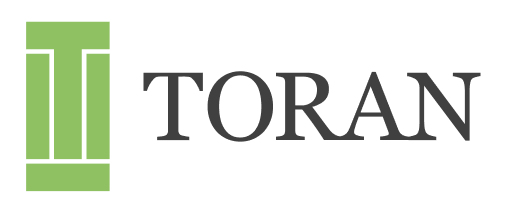
Fringe Benefit Planning
Fringe benefits are an essential aspect of compensation planning for S-Corporations and LLCs, offering significant tax advantages when managed correctly. At Toran, we provide expert guidance on setting up and optimizing fringe benefits, including health insurance, retirement plans, and more. Here’s a comprehensive overview of how these benefits can be leveraged to reduce your tax burden and enhance employee satisfaction.
Health Insurance: Compliance and Tax Advantages
Individual vs. Group Plans
If you’re an S-Corporation, you have the flexibility to choose between an individual health insurance plan or a group plan if your business has more than one employee. It’s crucial to ensure that any health insurance premiums paid by the corporation are properly documented and reported. If you pay for health insurance premiums out of pocket, your corporation must reimburse you before the year ends to maintain eligibility for deductions. Failure to follow this procedure could result in missed tax benefits, costing your business significantly in potential deductions.W-2 Reporting Requirements
For S-Corporation shareholders who own more than 2% of the company, health insurance premiums must be included on your W-2 as part of your payroll tax filing. This inclusion ensures that the IRS views the premiums as part of your compensation, which is necessary to qualify for deductions. It’s vital to ensure this reporting is done correctly; otherwise, you could lose the ability to deduct these premiums on your personal taxes. Properly handling W-2 reporting ensures that your business remains compliant and that you don’t face unnecessary penalties or lose out on tax benefits.Other Insurance Considerations
In addition to health insurance, your S-Corporation or LLC may manage other types of insurance, such as long-term care, disability, and life insurance. However, some of these policies, like key man insurance, require special handling to avoid tax complications. For instance, if life insurance proceeds are not reported correctly by the business, they could potentially become taxable. Proper structuring and reporting of these fringe benefits are essential for maintaining compliance and minimizing tax liabilities. By understanding and adhering to these compliance requirements, your S-Corporation can effectively manage health insurance and other fringe benefits while maximizing tax deductions and minimizing the risk of penalties.Health Savings Accounts (HSAs)
Tax Benefits
One of the most significant advantages of an HSA is the tax benefits it offers. Contributions to an HSA are made with pre-tax dollars, which means that the amount you contribute is deducted from your taxable income, lowering the amount of income you will be taxed on. This results in immediate tax savings. Additionally, funds in the HSA can be used tax-free for qualified medical expenses, such as prescriptions, doctor visits, and other healthcare-related costs. Unlike Flexible Spending Accounts (FSAs), which have a “use it or lose it” rule, HSA funds roll over year-to-year. This makes an HSA an excellent long-term savings tool for medical expenses, allowing you to build up a reserve of funds over time for unexpected healthcare costs or even retirement healthcare expenses.Contribution Limits
For 2024, the maximum contribution limits to an HSA are $4,150 for an individual plan and $8,300 for a family plan. These contributions are deducted from your income before taxes, offering immediate tax savings. It’s important to keep these limits in mind when planning your contributions to maximize your tax benefits. If you are 55 or older, you may also be eligible to make “catch-up” contributions, further increasing your potential tax savings. These contribution limits provide a substantial opportunity to reduce your taxable income and save for medical expenses in the long term.Getting Started
To get started with an HSA, you’ll need to verify that your health insurance plan qualifies for HSA contributions. Most high-deductible health plans (HDHPs) are eligible. Once you confirm your eligibility, you can open an HSA account through a bank or financial institution that offers HSA services. Contributions should be made from your personal account, and you will receive a dedicated HSA debit card or checks to use for paying qualified medical expenses. This makes managing your medical costs simple and tax-efficient. Be sure to keep records of your medical expenses, as you’ll need them to verify your HSA withdrawals. By understanding the tax benefits, contribution limits, and setup process of an HSA, you can take full advantage of this powerful savings tool to manage medical expenses and reduce your taxable income. An HSA is not only a great way to save on taxes but also an excellent long-term savings vehicle for future healthcare needs.Retirement Plans: Building Wealth and Reducing Taxes
Retirement Account Options
When it comes to retirement accounts, business owners have several plans to consider, including Simple IRAs, SEP IRAs, Solo 401(k)s, and defined benefit plans. Each plan offers different contribution limits and tax implications, so it’s important to choose the one that aligns with your long-term financial goals. A thorough evaluation of each option will help you maximize tax savings while ensuring you’re building a solid retirement fund. Consulting with a financial advisor can also provide clarity on which plan fits your business structure and personal retirement objectives.401(k) Plans
401(k) plans are particularly advantageous due to their higher contribution limits, making them an excellent tool for both retirement savings and tax reduction. In 2024, you can defer up to $22,500 as an employee, effectively lowering your taxable wages. Additionally, your business can contribute up to 25% of your wages, providing a further reduction in taxable income. This dual contribution structure makes 401(k)s one of the most powerful retirement savings vehicles available, particularly for business owners looking to balance personal and business tax benefits.Simple IRAs vs. 401(k)s
Simple IRAs offer easier setup and management compared to 401(k) plans but come with lower contribution limits. For example, in 2024, you can defer $15,500 into a Simple IRA, while a 401(k) allows for much higher contributions. If your business is just starting out or you prefer a less complex retirement plan, a Simple IRA could be a good option. However, if your goal is to maximize tax deferral and long-term savings, a 401(k) provides far greater flexibility and potential for higher contributions, making it a more effective retirement tool for growing businesses.Defined Benefit Plans
Defined benefit plans offer the potential for substantial contributions, often in the six-figure range, making them ideal for business owners who want to contribute a large portion of their income toward retirement savings. These plans are more complex to set up and manage, but they provide significant tax advantages for those in higher income brackets. If you’re looking to reduce your taxable income dramatically while ensuring a secure retirement, a defined benefit plan could be the right choice. However, the administrative costs and complexities of these plans typically make them more suited to established businesses with stable, high revenues. By funding your retirement through your business, you not only create a strong financial future for yourself but also take advantage of substantial tax savings today. Whether you choose a Simple IRA, SEP IRA, 401(k), or defined benefit plan, the right retirement account can make all the difference in achieving your long-term financial goals.
FRINGE BENEFIT PLANNING FAQs
For shareholders owning more than 2% of the company, health insurance premiums must be included in your W-2 payroll tax filing. This inclusion ensures proper compliance and allows for applicable tax deductions.
Yes, your S-Corporation can reimburse you for health insurance premiums paid personally, but the reimbursement must occur before the end of the year to maintain eligibility for tax deductions.
HSAs allow you to save on medical expenses with pre-tax dollars. Contributions reduce your taxable income, and funds used for qualified medical expenses remain tax-free, providing both immediate and long-term tax benefits.
Small business owners can choose from various retirement plans, such as Simple IRAs, SEP IRAs, Solo 401(k)s, and defined benefit plans. Each has unique contribution limits and tax advantages depending on your financial goals.
A 401(k) offers high contribution limits, reducing taxable income for both the employee and employer. This makes it a powerful tool for tax deferral and retirement savings, especially for business owners.

